Tritone Resolution for Guitar Players
How to Resolve the Most Dissonant Interval
In this tutorial, we're going to analyze the tritone interval (also known as the Devil's interval) and the important role it plays in chord progressions.
Good music is like a story that unfolds through peaks of tension and calm moments. Dissonant intervals like the tritone are essential for adding spice and guiding the progression of a song.
The Tritone Interval
The tritone interval is three whole steps wide, or six semitones. It can also be called a diminished fifth or an augmented fourth.
It is the only interval that divides the octave into exactly two parts (an octave is 12 semitones), placing it right in the middle.
Using the C major scale as an example, the tritone is the interval formed by C (the root) and Gb (or F#, learn more about enharmonics here).
Below, you'll find a fretboard map showing the tritone interval on various strings. Play them on your guitar and experience the daunting sound this interval creates.

Tritone intervals are located one fret and one string up from the root, except for intervals across the G and B strings, which are two frets up due to the guitar's tuning.
The Tritone Resolution, or "Where Shall We Go Now?"
When you hear a tritone, you can perceive a remarkable tension, a desire to move somewhere else, or, in music theory terms, to resolve!
Resolution dilutes the tension and allows the song to continue its story.
Tritone resolution can occur in two ways. Let's use notes in the C major scale for simplicity.
Suppose we have a tritone formed by B and F (if you count the semitones between these two notes, you'll get six).
Tritone Resolution No. 1 (Push)
In this resolution, B moves up by one half-step to become C, while F moves down by one half-step to become E. It's called push because it's like applying force to the notes and bringing them closer together.
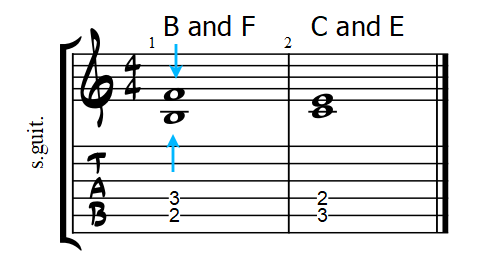
You can really feel the sense of satisfaction and completeness that this transition creates.
Tritone Resolution No. 2 (Pull)
In this resolution, B moves down by one half-step to Bb, while F moves up by one half-step to F#. It's called pull because it's the opposite of the previous resolution: we move the notes further apart, increasing the distance between them.
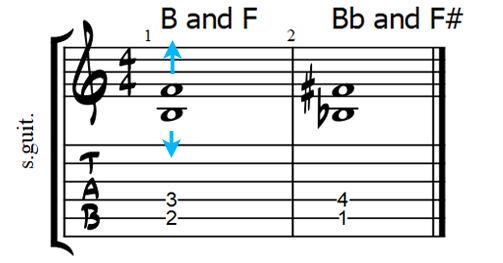
In this case as well, the movement brings satisfaction, as it feels like we've reached a conclusion.
The Tritone Resolution in Chords You Already Know
You might dismiss this as boring music theory, but I'm sure you're already using tritone resolution, even if unconsciously.
What is the most common chord quality that contains a tritone interval?
The dominant chord!
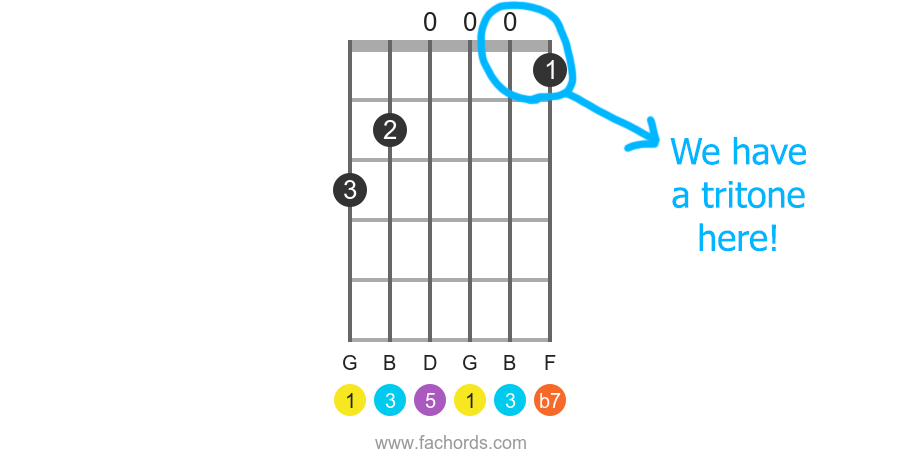
G7 Dominant Chord
Looking at our beloved G7 dominant chord, we can clearly see that it contains B and F. The distance between B (the third) and F (the minor seventh) is exactly six semitones, or, in other words, a tritone.
Dominant Chord Formula
The fact that dominant chords contain a tritone (always formed by the third and the minor seventh, 3 and b7 in the diagram above) is the reason for their characteristic sound.
Curious fact: Due to its unsettling sound, the Roman Church reportedly banned the use of the tritone in medieval times, calling it "The Devil's Interval." Imagine the boring life of a blues busker not allowed to use dominant chords! Luckily, centuries later, he had his revenge at a famous crossroad. However, the ban is just a myth with no proven sources.
V7 I (G7 to C) Cadence
Armed with our new knowledge of tritone intervals, we can now look at some of the most common chord sequences with fresh eyes.
G7
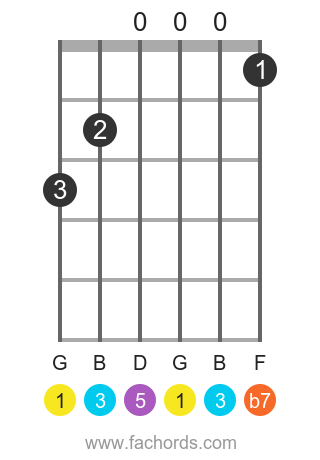
C
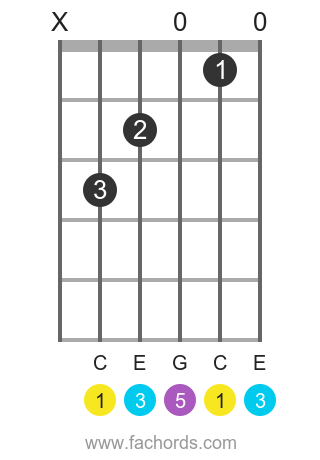
G7 to C
The C major chord is composed of C, E, and G.
B rises to C, and F drops to E.
V7 Vb (G7 to Gb) Cadence
G7

Gb
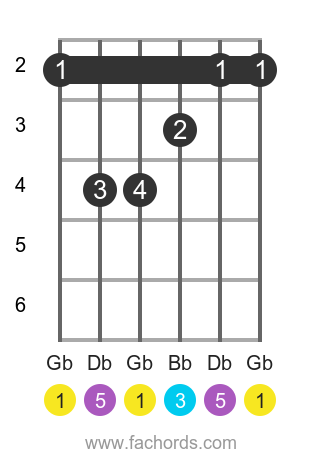
G7 to Gb
The Gb chord is composed of Gb, Bb, and Db.
B drops by one half-step to become Bb, and F rises by one half-step to become F# or Gb (different names for the same pitch).
Tritone Resolution - Conclusion
I'll leave you with a recap table showing the most common types of tritone resolution. As you'll notice, tritone resolution can also be used with minor chords. You might want to play these resolutions on the guitar to understand how they feel.
| Resolution | Example |
|---|---|
| Down a fifth to a major chord | G7 to C |
| Down a fifth to a minor chord | G7 to Cmin |
| Down a half step to a major chord | G7 to Gb |
| Down a half step to a minor chord | G7 to Gbmin |
That's all for today.
Remember that you can subscribe here to stay updated on new tutorials and gain access to the free download area, where you'll find some free chords and scales PDFs.